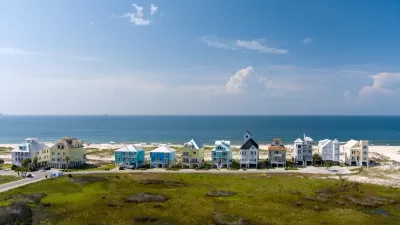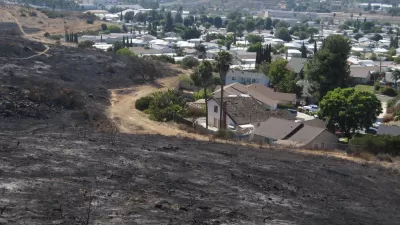Local governments and utilities are overexposed and underinsured relative to an increasing threat from severe weather events. The Brookings Institution has released a report on a new funding tool to help meet these challenges.
"One way for cash-strapped local governments to increase both protection and insurance against disasters is through a new financial tool called resilience bonds," according to a post by Shalini Vajhala.
Vajhala and colleague James Rhodes recently produced a report titled "Leveraging Catastrophe Bonds as a Mechanism for Resilient Infrastructure Project Finance" [pdf]. The idea behind the report "is to link insurance coverage that public sector entities can already purchase (such as catastrophe bonds) with capital investments in resilient infrastructure systems (such as flood barriers and green infrastructure) that reduce expected losses from disasters." Both the report and the article compare the connection between infrastructure and insurance with healthcare. Having life insurance or health insurance doesn't make people healthier, just like catastrophe bonds don't reduce physical risks.
"Resilience bonds," according to Vajhala, "combine these two different types of investments by modifying traditional catastrophe bonds to provide insurance savings that can be captured as rebates to invest in resilient infrastructure projects." The article includes more detail on why cities should be paying attention to resilience bonds.
FULL STORY: Financing infrastructure through resilience bonds

Alabama: Trump Terminates Settlements for Black Communities Harmed By Raw Sewage
Trump deemed the landmark civil rights agreement “illegal DEI and environmental justice policy.”

Planetizen Federal Action Tracker
A weekly monitor of how Trump’s orders and actions are impacting planners and planning in America.

Why Should We Subsidize Public Transportation?
Many public transit agencies face financial stress due to rising costs, declining fare revenue, and declining subsidies. Transit advocates must provide a strong business case for increasing public transit funding.

Understanding Road Diets
An explainer from Momentum highlights the advantages of reducing vehicle lanes in favor of more bike, transit, and pedestrian infrastructure.

New California Law Regulates Warehouse Pollution
A new law tightens building and emissions regulations for large distribution warehouses to mitigate air pollution and traffic in surrounding communities.

Phoenix Announces Opening Date for Light Rail Extension
The South Central extension will connect South Phoenix to downtown and other major hubs starting on June 7.
Urban Design for Planners 1: Software Tools
This six-course series explores essential urban design concepts using open source software and equips planners with the tools they need to participate fully in the urban design process.
Planning for Universal Design
Learn the tools for implementing Universal Design in planning regulations.
Caltrans
Smith Gee Studio
Institute for Housing and Urban Development Studies (IHS)
City of Grandview
Harvard GSD Executive Education
Toledo-Lucas County Plan Commissions
Salt Lake City
NYU Wagner Graduate School of Public Service




























